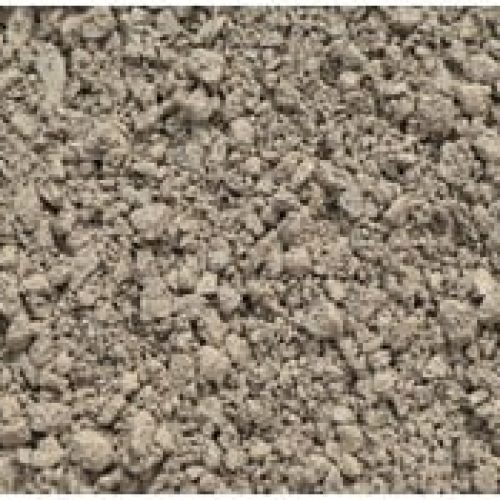What is Cement?
Cement is one of the most common materials used in modern construction industry. It is the main component for concreteand mortar , both of which are ideal for producing several crafts and accessories.

Types of Cement
There are different types of cements available in the market according to the nature of use. The most common one is Ordinary Portland Cement, which comes in two colors; grey (known as black) and white.
Cement available in the Jordanian market is classified according to strengthinto three grades; 32, 42, and 52 – where 32 is the weakest and 52 is the strongest. All grades are suitable for making crafts.
Mortar Vs. Concrete
Mortar is cement mixed with sand or other fillers, in addition to clean water.
Concrete is mortarwith coarse aggregates added to it.

Tip: Always make sure to use clean water for best results.
Types of Fillers
Fillers are inert materials that constitute the bulk volume of the concrete/mortar. The type of fillers directly affects the mechanical and physical properties of the mix.The most common types of fillers are sand and aggregate. Other types of fillers include silica and crushed limestone. In Jordan, the most used ones are Sweileh and silica sands, and crushed limestone. Most home accessories and crafts can be madeusing silica or Sweileh sand as fillers.

Silica Sand

Limestonesand

Sweileh sand
Mixing Tools
First thing first, you will need a container. It is best to use disposable plastic containers to spare yourself the hassle of cleaning it up. For mixing, professionals usually use a mixing drill to achievean ideal homogenicconsistency, however, you can simply use a stick.
A great thing about cement is that it is not sensitive to air bubbles, meaning that the mixing motion can be random, fast or slow.
Note: It is better to wear gloves when handling cement as it could irritate the skin.
Additives and Ancillary Products
Different additives or ancillary products can be added to the cement mix to modify or improve its behavior. One common example of these products is bonding agents, which increase the flexibility and the bonding of the mortar, while at the same time reduce water absorbency.
There are also plasticizer substances, which are used to reduce the water content, thus increasing the strength of the mortar or concrete. You can also use plasticizers when you don’t want to add a lot of water to the mix, but you want to increase workability.
Tip: The less water in the mixture, the stronger it is.
Another type of additives is retarders, which are used to delay the curingof the mortar or concrete, thus giving you more work time before it dries.
The opposite of retarders are accelerators, which are used to expedite the curing of the mortar or concrete.
Coloring and Pigments
There are many ways to color your cement crafts. Firstly, you can color the white cement mix with pigments (oxide or powder pigments), which are organic and have stable pigmentation, but tend to be dull. If you want to make the color more prominent, you can use certain types of sealers that intensify the vibrancy. Secondly, you can color your finished product using spray paints, acrylic colors, acid stain coloring systems, watercolors and emulsions, oil colors, and even charcoal.

Silica Sand
Working with Cement
The standard mixing ratio is 1 volume of cement, 3 volumes of sand, and 6 volumes of aggregate. Dry components are mixed together, then water is added gradually. You need to continue mixing until you achieve a unified workable paste. More/less water can be added until you get the consistency you’re looking for. Usually, you can keep adding water until you reach the desired liquidness, nevertheless, the quantity of water used should be consistent from one batch to another, especially if you are using additives or pigments.
Sealing
Because cement surface can be colored, it can also be stained and may absorb water. To maintain the vibrancy of the colors and bring them forth, we use sealers, which isolate the concrete/mortar. Sealers are divided into two main types: water-based and solvent-based. They can be matt, glossy or in between.
Molding and Shaping
Cement mixture is usually poured into a mold until it dries, taking the shape of the mold permanently. Molds can be made of many materials such as wood, metal, plastic, rubber, etc.
However, since concrete and mortar stick almost to any material, we need to use something called Mold Release, which is a substance that facilitates the unmolding of ourcement mixture. If you aren’t able to find this substance in shops, you can use oils, including those used for cooking. Butcement can absorb some of the oil, which can impact the final product.
Tip:For crafts with many intricate details, it is better to use rubber or silicone molds as they are the most flexible and easiest to unmold.
Waterproofing
To prevent your cement product from absorbing water overtime, you can use the previously mentioned sealers, the most common of which being the silicone or penetrating sealer. This way, you can maintain your product in the best condition for a longer time.
Terrazzo
Terrazzo is a type of mortars where crushed limestone is used as a filler (mis-known in the local market as quartz). Marble chips are used as aggregate in the mix. One very known terrazzo product is terrazzo tiles, where the top of the tiles is usually white mixed with colorful marble chips. The same mix can be used to produce different crafts, which is becoming a more popular trend.

Terrazzo tiles
Finishing
To add the final touches to your cement crafts, you can paint or color them as we mentioned earlier. You may also do some grinding and polishing works to smoothen the surface of the concrete/mortar. Another option is to expose the aggregate in the mixture by processing the final product with acid (diluted hydrochloric acid). You can also engrave concrete using mechanical equipment such as graving tools.
Safety Tips
It is better to wear gloves to avoid skin irritation. In case contact with eyes, clean them with fresh water. Of course, you must visit the doctor if the issue persists.
Cement is not toxic, however, since it is in powder form, it is better to wear a mask to avoid inhaling its particles.






